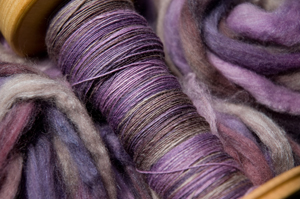The latest version of the international environmental textile certification standards was introduced
 Recently, the International Environmental Textile Association released the latest version of the oeko-tex standard 100 testing standards and limit value requirements for textile hazardous substances. The relevant regulations will take effect on April 1, 2013. According to testex Swiss Textile Testing Company, the official representative of the China Environmental Protection Textile Association, each oeko-tex certification issued will be clearly recorded in the future so that the compliance inspection of items with oeko-tex tags can be conducted regularly through corporate audits. .
Recently, the International Environmental Textile Association released the latest version of the oeko-tex standard 100 testing standards and limit value requirements for textile hazardous substances. The relevant regulations will take effect on April 1, 2013. According to testex Swiss Textile Testing Company, the official representative of the China Environmental Protection Textile Association, each oeko-tex certification issued will be clearly recorded in the future so that the compliance inspection of items with oeko-tex tags can be conducted regularly through corporate audits. . The specific test standards and limit values ​​for 2013 international environmental textile certification are as follows:
In the future, eight new polycyclic aromatic hydrocarbon (pah) components will be examined for candidate certification textiles. In addition, the existing benzo(a)pyrene limit was adjusted to 0.5 mg/kg in product level i, and the cumulative limit for all other pah was adjusted to 5 mg/kg.
Dimethylformamide (dmf), which is a substance of very high concern (svhc substances), is listed on the list of regulated solvents under the reach legislation. The limit value is 0.1%.
In addition, the three harmful health phthalates added to the test sample will be tested because some of these substances are also classified as svhc substances or have been included in the reach of the “intent registration†list. The cumulative limit value for product grades i and ii to iv remains at 0.1%.
Based on the clear definition of the limit value in Appendix xvii of the Reach Regulation, dimethyl fumarate (dmfu) as an added substance will be included in oeko-tex's list of regulated chemical residues and the relevant components will be checked. It is 0.1 mg/kg.
In accordance with the European standards for the modification of nickel emissions, the extractable nickel limits have been adjusted for all four oeko-tex product grades. The new limit value for product grade i will be 0.5 mg/kg, and product grade ii to iv 1.0 mg/kg.
Since the beginning of 2012, the International Environmental Textile Association has supervised the content of nonylphenol, octylphenol and apeo polyphenols (apeo) in product certification according to oeko-tex standard 100. As of April 1, 2013, this will be mandatory.
The following limit values ​​currently apply:
Accumulation of 50 mg/kg of octylphenol (op) and nonylphenol (np) (equivalent to 0.005% of textile weight)
- 500 mg/kg cumulative total of octylphenol, nonylphenol, octylphenol-(1-2)-hydroxyethyl, and nonylphenol-(1-9)-hydroxyethyl (equivalent to the weight of textile fabrics) 0.05%)
These limit values ​​provide strong support for oeko-tex's "Zhc" initiative for hazardous chemicals. Through corporate audits, the sensitivity of companies in oeko-tex systems to the hazardous substances contained in auxiliary materials is further enhanced.
Our Bike Chain Protector is consist of 3mm Neoprene and hook and loop.
High quality neoprene is soft, waterproof and washable and can effectively protect bicycle frame and paint from damage for a long time.
Common size is 120*250mm, size, color, logo can be customized.
All of our Bicycle Chain Frame Protector have passed RoHS & SGS, and use environmental protection raw material to dye, conform to the European environmental protection standards.
MOQ is 1000PCS.
Bike Chain Protector
Bike Chain Protector,Mountain Bike Chain Protector,Road Bike Chain Protector,Bicycle Chain Frame Protector
Shenzhen Hongxiangwen Hook&Loop Co.,Ltd , https://www.hxwsports.com
